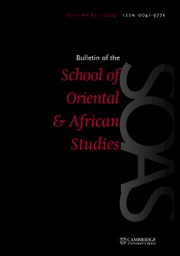Before he passed away in 2002, I regularly visited Prof. Franz Köcher (the Grossmeister in the field of Babylonian medicine) at his home in Berlin, where he used to show me a large and nearly complete manuscript on his desk dealing with Akkadian pharmaceutical lists, with cross-references between the lists and therapeutic recipes. Unfortunately, after his death, the Köcher manuscript was taken to Madrid and never published, so that Köcher's final magnum opus has had to be redone by others. The new work consists of the present volume of cuneiform copies completed by Jeanette Fincke, with a second volume of text editions from JoAnn Scurlock to appear shortly. In addition to the cuneiform copies, Fincke has provided a lengthy introduction with details regarding the mechanics of producing cuneiform library tablets, such as those copied in the present book.
Reviews do not usually comment on the quality of cuneiform copies, since photographs have become the more usual mode for publishing tablets. It is refreshing to have hand copies of tablets to work from, especially since large format tablets are presented in their entirety and also with close-up formats of individual columns, to aid reading. Nevertheless, the printing of the copies by Peeters is not always ideal since some copies appear faint, and although everything is legible, the aesthetics of the copies is somewhat diminished. Many of these tablets were previously copied in earlier publications, but the new copies include new joins and reflect collations of the tablets, hence an important contribution to this study.
The introduction treats cuneiform tablets as archaeological objects, examining all imaginable aspects of their physical forms. This includes formats, shape, colour, and whether they contain “firing holes”, as well as tablet layouts with rulings, column divisions, and marginal notations. Library tablets vary according to the number of columns on the obverse and reverse (with the same on both sides or not), and tablet layouts include indentation as well as justification of the right margins. Fincke also highlights procedures for erasing and correcting signs on tablets, which is not always straightforward when dealing with the medium of clay. This information is surprisingly timely, since fewer scholars currently work with actual tablets, partly because museum collections are more difficult to access and partly because extensive photographic archives on the internet (such as CDLI and eBL) have become popular and useful.
The new readings resulting from these new copies are likely to be important, although this will only become clear once the texts editions from JoAnn Scurlock have appeared. The present reviewer has made a test sounding of a few lines, to see how the copies match previous readings of the tablet, in this case BM 108860, previously published as CT 37 plates 28–32. Lines from col. i 10'–13' are difficult since they list drugs with foreign names. According to Fincke's copies, the lines read:

The point of this extract is that these are foreign names of plants otherwise known by their Akkadian labels harūbu-carob and ašāgu-thorns. The plants are known from outside Mesopotamia, from Šubaru, Kinahu (Canaan), and Meluhha, and Fincke's copy allows us to make corrected readings in ll. 12'–13', for the plant names kakušaku (for kakkušakku) and kašutu. Moreover, the plant name egatu is even more interesting if from the Levant, since it may match up with Jewish Aramaic hgt', a term for thorn and carob which has already been considered as a cognate to the rare Akk. term egû (M. Sokoloff, A Dictionary of Jewish Babylonian Aramaic of the Talmudic and Geonic Periods, Ramat Gan: Bar Ilan University Press, 20202), 307–08. This reading probably confirms the identification.
It seems clear from this brief probe of the readings that the new copies of these tablets have much to offer, and we await the edition of these texts with interest.



